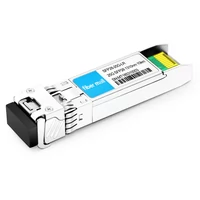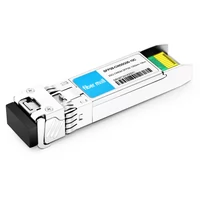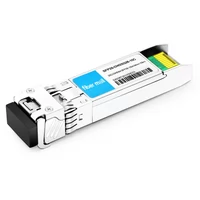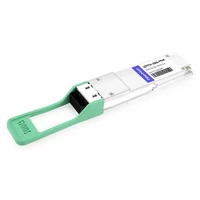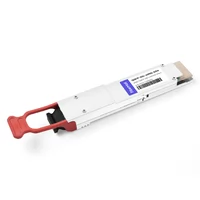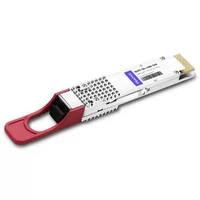In 2019, the fifth-generation mobile communication (5G) technology was officially launched for commercial use. In 2020, 5G networks and data centers were identified as the key contents of new infrastructure construction. In 2021, the world increased the construction of 5G networks and gigabit optical networks to enrich application scenarios. 5G, data centers, all-optical access networks, and other related technologies and industries are developing rapidly. Optical modules are the basic building blocks of 5G bearer networks, data center interconnection, and all-optical access networks whose main function is to realize the two-way conversion between light and electricity. In recent years, with the gradual increase in speed, the cost of optical modules in system equipment has continued to rise. Optical transceivers have become the key element of high bandwidth, wide coverage, low cost, and low energy consumption in various application fields.
- Requirements of 5G bearer network for optical modules
The front-haul optical module is an important part of the physical bearer of the CPRI link connecting the baseband unit (BBU) and the remote radio unit (RRU)/active antenna unit (AAU). From 1.25 Gb/s in the 2G era to 2.5 Gb/s in the 3G era, and then to 6/10 Gb/s in the 4G era, the rate of bearer optical modules has continued to evolve, and the transmission distances mainly include 300m, 1.4km, and 10km. With the advent of the 5G era, the number of AAU antennas has been increased by 8 times from 8T/8R to 64T/64R, and the air interface bandwidth has been increased from 20MHz to 100MHz. If the CPRI segmentation scheme is maintained, the bandwidth requirement will increase by 40 times from 10Gb/s to 400Gb/s.
In order to reduce the bandwidth pressure, the industry adopts the eCPRI segmentation solution, and deploys part of the BBU on the AAU, thereby reducing the bandwidth requirement between the BBU and the AAU. Taking 100MHz air interface bandwidth and 64T/64R as an example, the bandwidth requirement for a 5G front-haul single interface has dropped to 25Gb/s, which can be effectively supported by multiplexing the mature Ethernet industry chain.
In the early stage of 5G deployment, operators will centralize BBU to reduce the resource requirements of equipment rooms, thereby achieving rapid and scale deployment. However, the centralized radio access network (CRAN) scenario consumes a lot of the backbone fiber. The industry accordingly proposes 6-wavelength CWDM, 12-wavelength LWDM/MWDM, 48-wavelength DWDM, and other WDM solutions based on 25Gb/s to converge and save fiber resources.
With the evolution of 5G, the subsequent versions (Rel 17/Rel 18) will focus on sub 10GHz, millimeter-wavelength, and other frequency bands. If the number of antennas and air interface bandwidth is further increased, 50Gb/s and higher-rate optical modules will be required to meet front-haul bandwidth requirements.
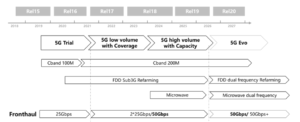
Figure 1: Evolution of 5G fronthaul bearer requirements
At present, the industry is actively exploring the next-generation fronthaul, high-speed, and cost-effective optical module solutions that can meet the temperature requirements of front-haul industrial grade, and guarantee long-term reliability for more than ten years. The potential requirements are shown in Table 1.
| Rate | Form factor | Transmission distance | Working wavelength | Modulation format | Optical chip | Electric chip |
|---|---|---|---|---|---|---|
| 50Gb/s | SFP56 | 300m | 1310nm | PAM4 | DFB+PIN | CDR/DSP |
| SFP56 | 2km | 1310nm | PAM4 | DFB+PIN | CDR/DSP | |
| SFP56 | 10km | 1310nm | PAM4 | DFB+PIN | CDR/DSP | |
| SFP56 BiDi | 10km/15km | 1270nm/1330nm | PAM4 | DFB+PIN | CDR/DSP | |
| SFP56 | 10km | CWDM | PAM4 | DFB+PIN | CDR/DSP | |
| SFP56 tunable | 10km/20km | DWDM | PAM4 | EML+PIN | CDR/DSP | |
| 100Gb/s | DSFP | 10km | 1310nm | PAM4 | EML+PIN | DSP |
| DSFP BiDi | 10km | 1310nm | PAM4 | EML+PIN | DSP | |
| SFP112 | 10km | 1310nm | PAM4 | EML+PIN | DSP | |
| SFP112 BiDi | 10km | 1310nm | PAM4 | EML+PIN | DSP | |
| 200Gb/s | QSFP56 | 10km | CWDM | PAM4 | EML+PIN | DSP |
| 400Gb/s | QSFP112 | 10km | CWDM | PAM4 | EML+PIN | DSP |
Table 1: Potential demand for new 5G fronthaul optical modules
The 5G midhaul and backhaul access layers are usually dominated by a ring topology, and the typical bandwidth requirements of the distributed radio access network (DRAN) are: 10/25/50Gb/s; CRAN typical bandwidth requirements are 50/100Gb/s. With the increasing maturity of 400Gb/s 30/40km optical module technical solutions and the evolution of 800Gb/s optical modules, the next stage of 5G midhaul and backhaul optical modules will face more choices of new solutions.
| Rate | Form factor | Transmission distance | Working wavelength | Modulation format | Optical chip | Electric chip |
|---|---|---|---|---|---|---|
| 400Gb/s | QSFP-DD | 30km | LWDM(4-wavelength) | PAM4 | EML+APD | DSP |
| QSFP-DD | 40km | LWDM(8-wavelength) | PAM4 | EML+APD | DSP | |
| 800Gb/s | OSFP/QSFP-DD800 | 10km | LWDM(8-wavelength) | PAM4 | EML+PIN | DSP |
Table 2: Potential demand for new 5G midhaul and backhaul optical modules
In the longer term, with the continuous advancement of 6G technology research and application exploration, the 6G fronthaul capacity may be greatly improved. 6G will be further integrated with cloud computing, big data, and artificial intelligence, and there will be a huge improvement in the dimension and breadth of wireless connections, which can support ultra-high-bandwidth video transmission, ultra-low latency industrial IoT (Internet of things), the interconnection of air, space and ground, and other application scenarios.
System performance needs to support 1Tb/s peak rate and 1Gb/s user experience rate, 0.1ms ultra-low latency and high-speed communication, ultra-high spectrum utilization, etc. Compared with the peak rate of the 5G air interface, the transmission demand of the 6G wireless access network may be increased by a hundred times. Considering new requirements such as the integration of air, space, and ground, it is expected that the fronthaul capacity will need to be increased by dozens of times.
- 5G optical module technical solutions and standardization hotspots
25Gb/s wavelength-tunable optical module
(1) C band
The application scenarios of 25Gb/s C-band wavelength tunable optical modules are mainly based on 5G fronthaul. The application scenarios of metropolitan area network (MAN) mainly adopt a 10Gb/s rate, and the feasibility of evolution to a 25Gb/s rate will be discussed in the near future. The 25Gb/s wavelength-tunable optical module needs to support the automatic wavelength adaptation function, which can be realized through the message channel mechanism specified in ITU-T G.698.4.
There are many implementation schemes for wavelength-tunable technology, including distributed feedback (DFB) array, distributed Bragg reflection (DBR), digital supermode DBR (DS DBR), modulated grating Y-type laser (MG-Y branch), sampling grating DBR ( SG DBR), vertical-cavity surface-emitting laser (VCSEL), external cavity laser (ECL), silicon optical micro-ring cavity and V-shaped coupling cavity, etc. These schemes mainly adopt temperature control, current control, and mechanical control. The technical comparison is shown in Table 3.
| Laser type | Wavelength Tuning Scheme | Integration type | Wavelength tuning range |
|---|---|---|---|
| DFB | temperature | Monolithic integration | 4-5nm |
| DFB array | temperature, mechanics | Monolithic or hybrid integration | > 30nm |
| Monolithic DBR | temperature and current | Monolithic integration with simple structure | about 10nm |
| MG-Y/SG-DBR/DS-DBR | current | Monolithic integration | 30nm |
| ECL | temperature, mechanics, micromechanics, etc. | Hybrid integration | > 30nm |
| MEMS- VCSEL | micromechanics | Monolithic or hybrid integration | > 30nm |
| V-shaped coupling cavity | current | Monolithic integration | > 30nm |
Table 3: Comparison of wavelength tuning techniques
In terms of the wavelength tuning range, it can be divided into full C-band tunable and narrow-band C-band partially tunable; In terms of the modulation format, it can be divided into tunable wavelength technology based on EML and MZM. It is convenient for EA to achieve monolithic integration with laser chip, and MZM can achieve a higher extinction ratio and can be flexibly controlled.
In terms of receiving scheme, it can be divided into PIN receiving and APD receiving; In the aspect of optical module interface types, it can be divided into single-fiber bidirectional and dual-fiber bidirectional, using different DWDM MUX/DEMUX.
In terms of standardization, the industry standards for 25Gb/s DWDM optical modules and N×25Gb/s DWDM system technical requirements are already in the approval process and will be released soon. The international ITU-T G.698.x series of standards are being revised. At present, the main parameters such as spectrum excursion and ripples are under discussion, and the standard revision is expected to be completed in 2022.
In terms of application deployment, many manufacturers such as Nokia, Ericsson, Samsung, HW, ZTE, II-VI, and FiberMall can provide samples of 25Gb/s C-band wavelength tunable optical modules. The 25Gb/s front-haul DWDM of these equipment manufacturers collected and tested in the labs are currently being piloted on the existing network.
(2) O band
The 25Gb/s O-band wavelength-tunable optical module is mainly used in the 5G fronthaul field. The 12-channel wavelength planning is shown in Figure 2. The interval wavelengths are reserved between channels 1 ~ 6 and channels 7 ~12, which is conducive to the isolation of uplink and downlink channels. The 400GHz spacing can greatly reduce the manufacturing difficulty compared to the 100/50GHz spacing used by DWDM.
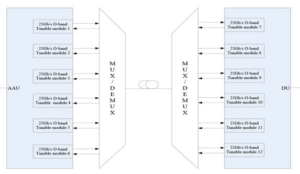
Figure 2: 12-channel O-band wavelength planning
The functional block diagram of the 25Gb/s O-band wavelength-tunable optical module is shown in Figure 3. The tunable optical component of the TOSA needs to use TEC for temperature stabilization, and adjust the wavelength output by changing the size of the current source applied to IP and IF. PD1 and PD2 are used to detect the relevant photocurrent, and the output light wavelength is locked by stabilizing the ratio of PD1 and PD2. The optical module can be packaged in SFP28, and the optical interface type can realize single-fiber bidirectional or dual-fiber bidirectional according to needs.
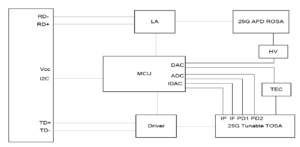
Figure 3: Optical Module Functional Diagram
The cost of the tunable optical module is mainly reflected in the tunable DBR optical component, which accounts for more than 80% of the entire cost. It can be divided into the BOX form factor and TO coaxial form factor. The former has better high-frequency performance and smaller size, but higher cost. Optical modulators mainly include EAM, MZM, and DML direct modulation. Among them, MZM has the highest cost, and EAM has the medium one. DML direct modulation has the lowest cost, but its high-frequency performance is relatively poor, and the eye diagram quality and transmission distance are limited.
Cost is a more sensitive topic in the 5G fronthaul field. Under the premise of meeting the application conditions, it is extremely important to optimize the selection of technical solutions for the module. For example, in terms of wavelength planning, considering that the wavelength adjustment range of the O-band tunable DBR optical chip is about ten nanometers,12 wavelength channels with 400GHz channel spacing can be used to take into account both application scenarios and manufacturing costs. In addition, TO coaxial packaging can be used to cooperate with DML direct modulation to reduce costs.
The 25Gb/s O-band wavelength-tunable optical module involves many technical difficulties, such as the development and mass production of wavelength-tunable laser chips; small-volume DBR die packaging with cooling and optical component design; low-cost DBR wavelength locking and optical power monitoring, stabilizing, tuning mechanism; the performance and reliability of the pilot tone mechanism; the development and reliability of the communication protocol between end-to-end optical modules; the realization of low power consumption and heat dissipation of the wavelength-tunable optical module with industrial temperature; low-cost batch wavelength calibration, testing, and production methods for the wavelength-tunable optical modules.
In terms of application exploration, the 25Gb/s O-band wavelength-tunable optical module is currently in the design and development stage. It is expected to produce prototypes and α samples in 2022. It will produce β samples and realize its small-scale production in 2023. The specific application in the future will depend on the industry’s comprehensive evaluation of the fronthaul program.
- Summary
With the continuous advancement of 5G construction in stages and the vigorous development of data centers and all-optical access networks, new application requirements for optical modules continue to emerge, and 5G bearer network optical module technology has increasingly become the focus of the industry. The 5G bearer working group will continue to strengthen cooperation with the industry, focus on consensus, and jointly promote the research, testing, and evaluation of key technologies for 5G bearer optical modules, and the formulation of standards and specifications, so as to facilitate the healthy and orderly development of the 5G bearer optical module technology industry and strongly support 5G construction.
Table of Contents
ToggleRelated Products:
-
 Huawei SFP-25G-LR Compatible 25G SFP28 LR 1310nm 10km LC SMF DDM Transceiver Module
$45.00
Huawei SFP-25G-LR Compatible 25G SFP28 LR 1310nm 10km LC SMF DDM Transceiver Module
$45.00
-
 Huawei CWDM-SFP25G-1350-10 Compatible 25G CWDM SFP28 1350nm 10km LC SMF DDM Transceiver Module
$50.00
Huawei CWDM-SFP25G-1350-10 Compatible 25G CWDM SFP28 1350nm 10km LC SMF DDM Transceiver Module
$50.00
-
 SFP28-DW25G28-10C 25G DWDM SFP28 C28 100GHz 1554.94nm 10km LC SMF DDM Transceiver Module
$265.00
SFP28-DW25G28-10C 25G DWDM SFP28 C28 100GHz 1554.94nm 10km LC SMF DDM Transceiver Module
$265.00
-
 QSFP56-200G-FR4S 200G QSFP56 FR4 PAM4 CWDM4 2km LC SMF FEC Optical Transceiver Module
$650.00
QSFP56-200G-FR4S 200G QSFP56 FR4 PAM4 CWDM4 2km LC SMF FEC Optical Transceiver Module
$650.00
-
 QSFP-DD-400G-ER4 400G QSFP-DD ER4 PAM4 LWDM4 40km LC SMF without FEC Optical Transceiver Module
$3500.00
QSFP-DD-400G-ER4 400G QSFP-DD ER4 PAM4 LWDM4 40km LC SMF without FEC Optical Transceiver Module
$3500.00
-
 QSFP-DD-400G-ER8 400G QSFP-DD ER8 PAM4 LWDM8 40km LC SMF FEC Optical Transceiver Module
$3800.00
QSFP-DD-400G-ER8 400G QSFP-DD ER8 PAM4 LWDM8 40km LC SMF FEC Optical Transceiver Module
$3800.00

